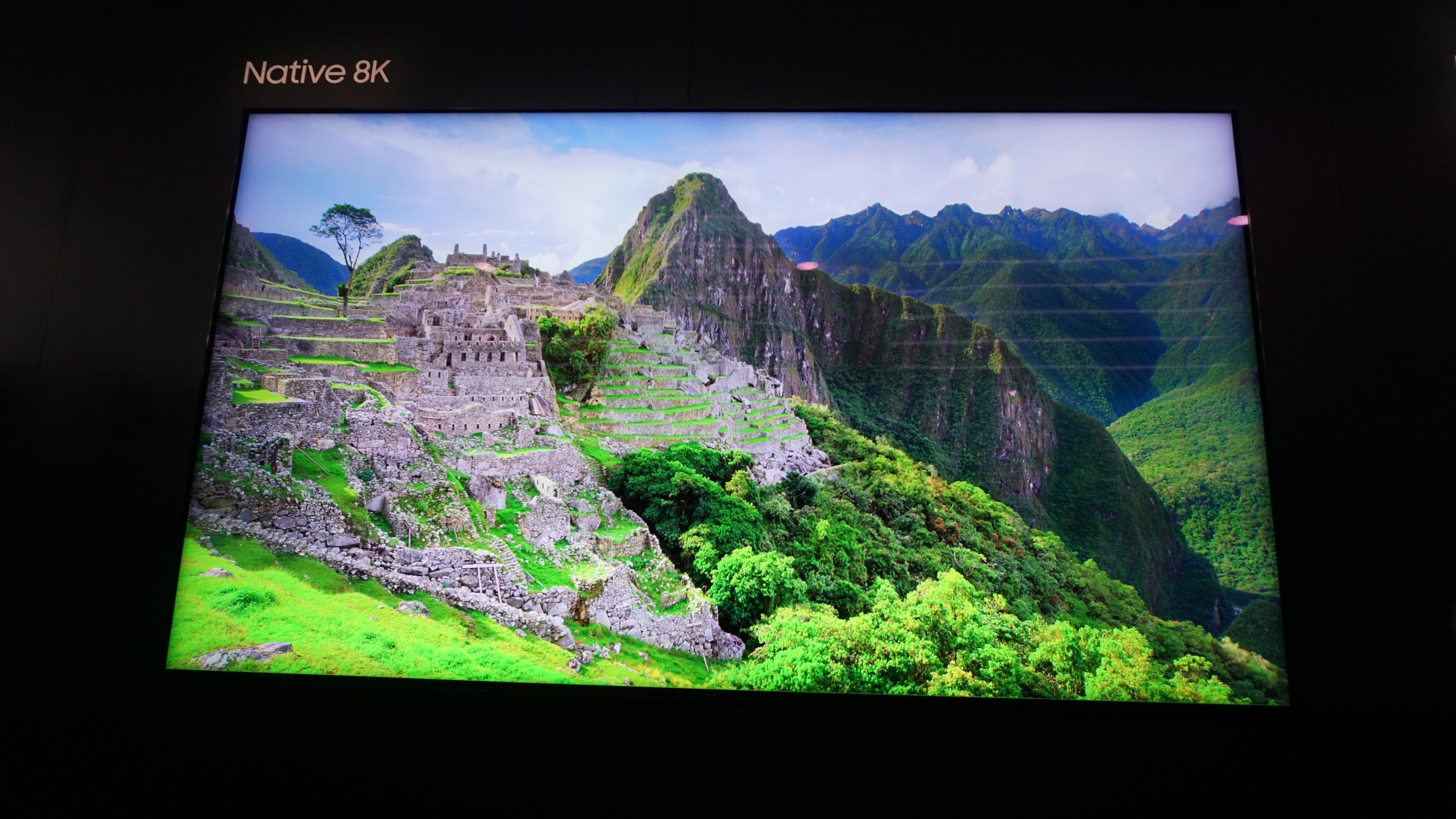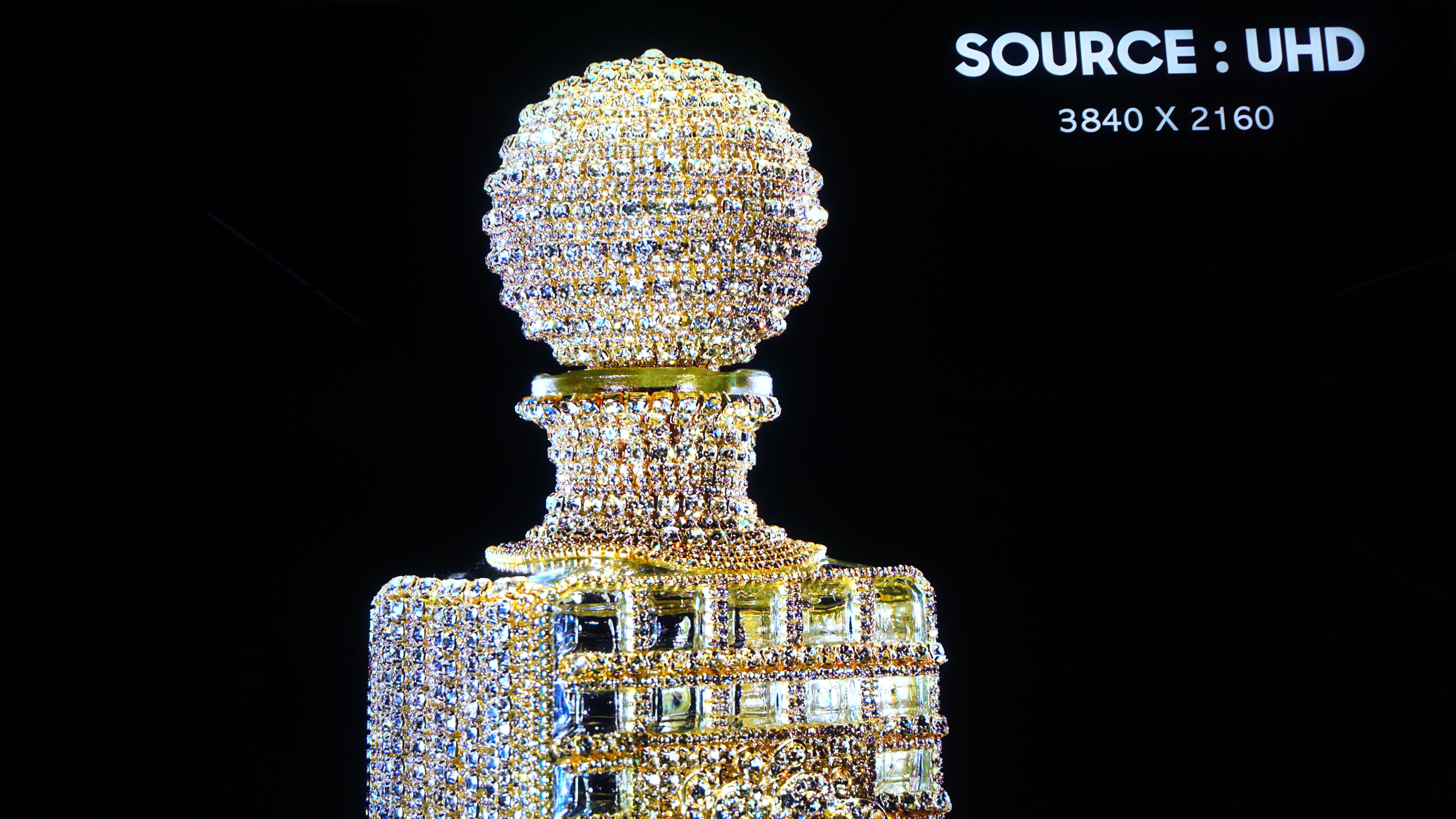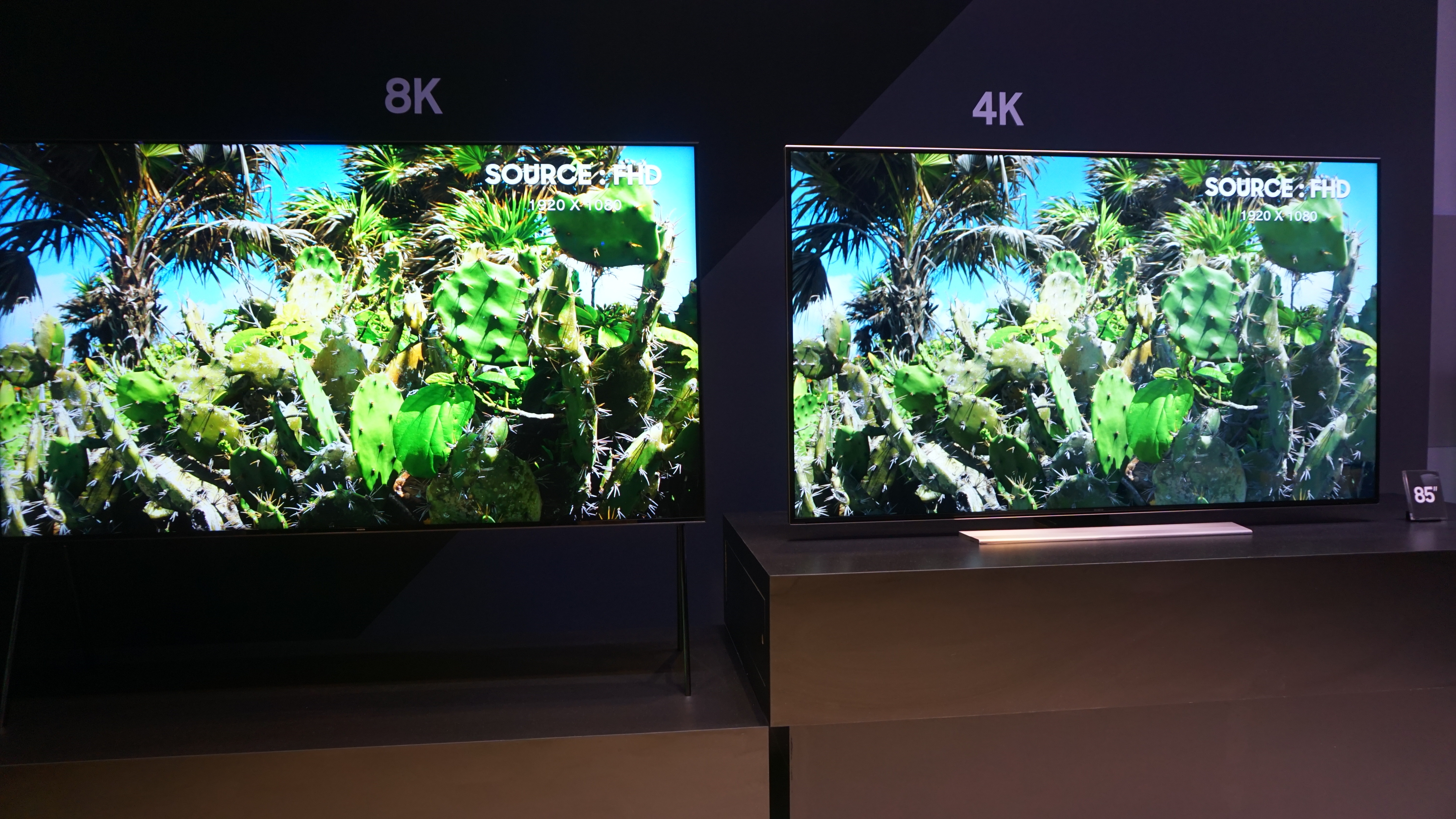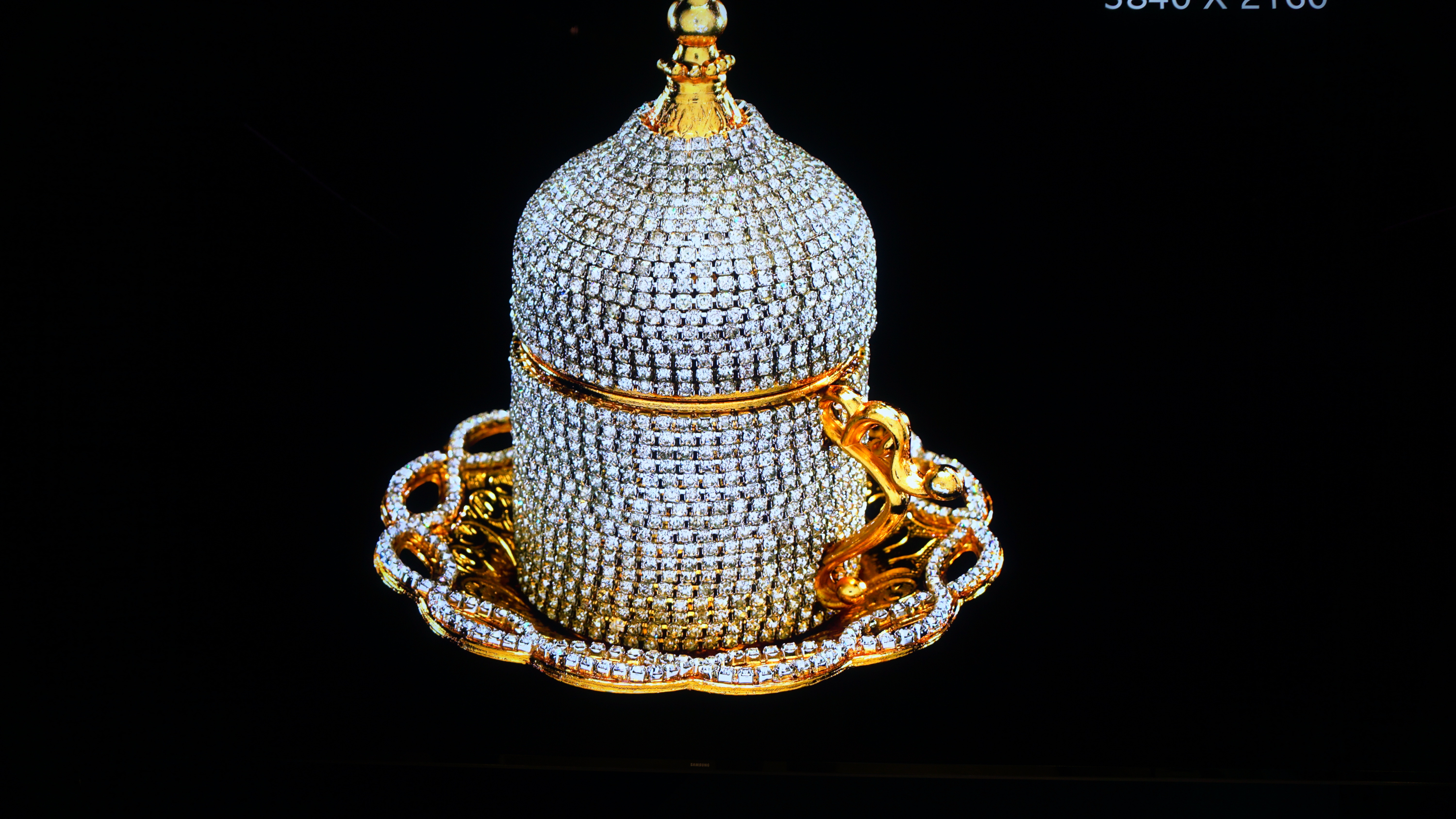Samsung Q9S 8K TV with AI Upscaling makes hyper high-res content for you

Sometimes, less is more. At least that's true when talking about Samsung's new Q9S TV that will convert anything – even SD content – into eye-watering 8K resolution.
Samsung unveiled the television to the world during its First Look keynote at CES 2018, and it was there that we first got our eyes on the new, super-sized screen. What we saw was a TV that did something that would make even the cynical AV enthusiast's heart flutter: it very successfully converted low-resolution content into 8K UHD using the world's most advanced upscaler.
While we'd love to tell you more – what type of panel the TV uses, its peak brightness or any other detail beyond its AI upscaling capabilities – but we can't. Not because we don't want to, but because Samsung simply isn't ready to reveal that information.

So what do we know?
Despite not having many details on the TV, Samsung has confirmed on numerous occasions that the Q9S is a full, nearly retail-ready television. Samsung hopes to release it alongside the other QLED TVs later this year, but couldn't put its finger on a price point just yet. (Hint: it's going to be expensive.)
We know of one screen size so far – an 85-inch beast – and that it will come with its own stand, similar in style to the one found on The Frame. Samsung hasn't announced if there will be any other sizes available, but it hasn't dropped the possibility, either.
Giving it a visual once-over, you might be surprised by the Q9S’s frame, it’s substantially thicker than many of the smart screens we’ve seen at the show. The bezel that surrounds the screen isn’t all that thick (maybe an inch at most) but it’s a far cry from the completely bezel-free The Wall, another Samsung product shown off at this year’s CES.

How is it up-converting content to 8K?
Samsung hasn’t told us everything about the 8K up-conversion algorithm, but time and again that we’ve spoken to the South Korean TV manufacturer about the process, two words come up: artificial intelligence.
Sign up for breaking news, reviews, opinion, top tech deals, and more.
According to Samsung, the TV recognizes objects in the image, and then finds ways to restore the edges, create jagged-free images, reduce noise and retain details of the original image. It’s good at all those processes now – at least from the demos we’ve seen – but Samsung promises it will be even better at launch. In between now and then, Samsung will be feeding the Q9S a constant feed of SD, HD and 4K content – continuously tasking the processor to recognize more objects and scenes, and improve its upscaling algorithm.
This process will continue long after the television is released out into the wild, too, with Samsung periodically rolling out software updates to give the Q9S the freshest version of the algorithm.

Is this the future of televisions?
The 8K up-conversion is, likely, one small step on the path forward for TVs. But it’s worth keeping in mind that resolution, on its own, can only do so much.
It will be a combination of higher resolution, better formats – like Dolby Vision and HDR10+ – and upgraded panel technology, like OLED or MicroLED that will one day give us the next big leap in TVs.
While we wait for all that, though, Samsung’s Q9S acts like a peephole into the future, giving us a small glimpse of what an all-8K world will look like five to nine years from now.
- New year, new tech – check out all our coverage of CES 2018 straight from Las Vegas, the greatest gadget show on Earth

Nick Pino is Managing Editor, TV and AV for TechRadar's sister site, Tom's Guide. Previously, he was the Senior Editor of Home Entertainment at TechRadar, covering TVs, headphones, speakers, video games, VR and streaming devices. He's also written for GamesRadar+, Official Xbox Magazine, PC Gamer and other outlets over the last decade, and he has a degree in computer science he's not using if anyone wants it.